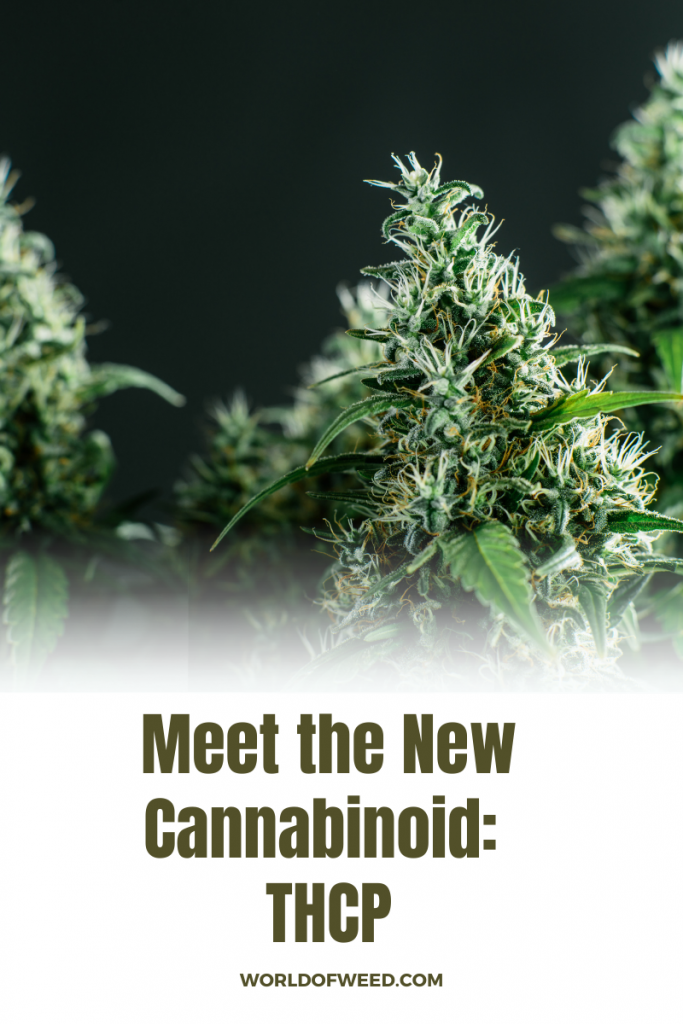Cannabis is a botanical wonder that just keeps on surprising the world. As cannabis research gains momentum, the biological complexity and multi-faceted potential for both recreational and medicinal use of the plant are becoming increasingly evident. In 2020, Italian researchers discovered two new cannabinoids: Tetrahydocannabiphorol (THCP) and Cannabidiphorol (CBDP). As their names suggest, the structure and function of these novel cannabinoids are similar to those of THC and CBD.
Currently, there are approximately 120 phytocannabinoids detected in the cannabis plant, with the large majority of them having been neither isolated nor characterized. While federal legality plays a pivotal role in this, the THC- or CBD- dominance of most strains makes the isolation and observation of minor cannabinoids a challenge.
This is on the brink of changing, however. The latest advancement in chromatology research, analytical techniques, and laboratory equipment used to identify unknown cannabis compounds bolsters the discovery of new phytocannabinoids.
In addition to this being an exciting thing for recreational cannabis consumers, the discovery and identification of previously unknown phytocannabinoids hold immense potential for therapeutic use.
And, right now, the stars are aligning for THCP to serve as a possible game-changer. So, what exactly makes THCP so special?

What is Cannabinoid THCP?
The compounds that make cannabis so special are cannabinoids, terpenes, and flavonoids. It’s the cannabinoids, however, that are most renowned for providing therapeutic benefits.
There are numerous different cannabinoids with various properties, with some of the most abundant including:
- Delta-9-tetrahydrocannabinol (THC)
- Cannabidiol (CBD)
- Cannabigerol (CBG)
- Cannabinol (CBN)
- Cannabichromene (CBC)
And, now, tetrahydrocanniphorol (THCP).
The newly discovered THCP molecule was found have an elongation in a salient side chain in the molecule’s structure, with seven links. Regular THC, in contrast, has five links. For additional context, naturally occurring cannabinoids with more than five links in this particular side chain have yet to be detected within the cannabis plant.
The length of this chain plays a critical role in the effects THC has on the body’s CB1 receptors (learn the difference between CB1 and CB2 receptors here). A chain must have three links in order to bind THC to the cannabinoid receptor, with a binding affinity that peaks that eight links before it begins to decrease in activity.
The recent THCP cannabinoid research shows THCP’s elongated side chain seems to bind to the CB1 receptor more than Delta-9-THC, which is what makes THCP a more psychoactively powerful cannabinoid.
In fact, the binding affinity of THCP against CB1 and CB2 receptors indicates THCP is over 30 times more active than Delta-9-THC on the CB1 receptor and 5-10 times more active than Delta-9-THC on the CB2 receptor.
How the THCP Cannabinoid is Produced
While there are over 100 different phytocannabinoids, they are all at least somewhat similar in structure. This is because they all began as the same molecule – cannabigerolic acid (CBGA).
CBGA forms via a complex enzymatic reaction between olivetolic acid and geranyl pyrophosphate, after which it becomes the acidic form of the phytocannabinoids, such as THCA and CBDA.
These cannabinoids are in their acidic forms only in the raw cannabis plant. The cannabinoids in your nugs go through decarboxylation when heat occurs, transforming the THCA into THC, CBDA into CBD, and so on. THCPA and CBDA are similar in formation, as it’s only after this exposure to heat that they change into THCP and CBDP.
The big difference lies in the concentration of these cannabinoids. Unlike the others, THCP and CBDP are only present in minute amounts within any given cannabis plant. This is why their existence has remained a highly elusive secret until now.
Why is the Discovery of Cannabinoid THCP Important?
One of the main reasons this study matters is that it means THCP could explain why cannabis can cause such vastly disparate experiences in consumers. Even with equivalent doses of Delta-9-THC, the subject response drastically varies.
While it has long been believed that the psychotropic effects of the cannabis plant are primarily a result of the presence of THC, they may actually be partly due to THCP or other highly potent phytocannabinoids that are still hidden away in the cannabis plant structure and not yet identified. Expanding our understanding of the effects of THCP may better enable us to evaluate the recreational and medicinal effects of cannabis products.
This newly discovered THCP cannabinoid also suggests there is a need to cultivate strains of cannabis that are not strictly THC- or CBD- dominant. Cannabis cultivars rich in other minor cannabinoids, such as THCP, may eventually become available in the same way CBG and THCV are starting to.
Continuing with this research is vital. Identification and categorization of other minor cannabinoids and the rest of the currently unknown cannabinoids may provide therapeutic benefits that can prove to be transformative for both medicinal and recreational use.
Would you smoke a THCP-rich strain?
Share your thoughts on this newly discovered cannabinoid down in the comments!
Disclaimer: Marijuana has intoxicating effects and may be habit-forming. Smoking is hazardous to your health. There may be health risks associated with consumption of Marijuana. Marijuana, in any form, should not be used by individuals that are pregnant or breastfeeding. Marijuana is intended for use only by adults 21 and older. Keep out of reach of children. Marijuana can impair concentration, coordination, and judgment. Do not operate a vehicle or machinery under the influence of this drug. This product may be unlawful outside of Washington State.








